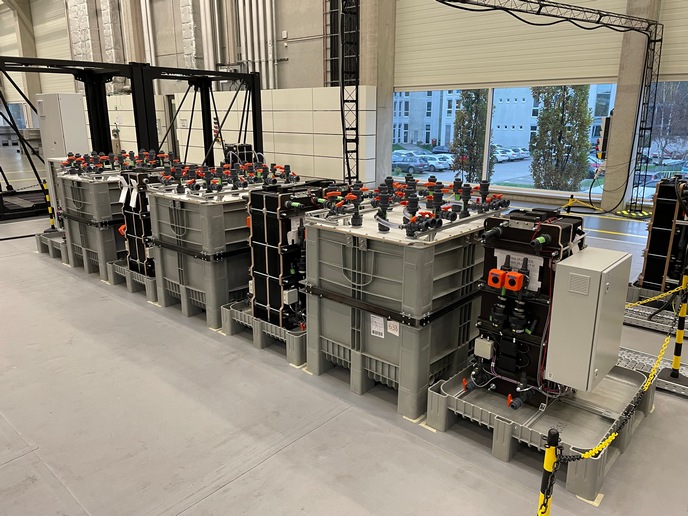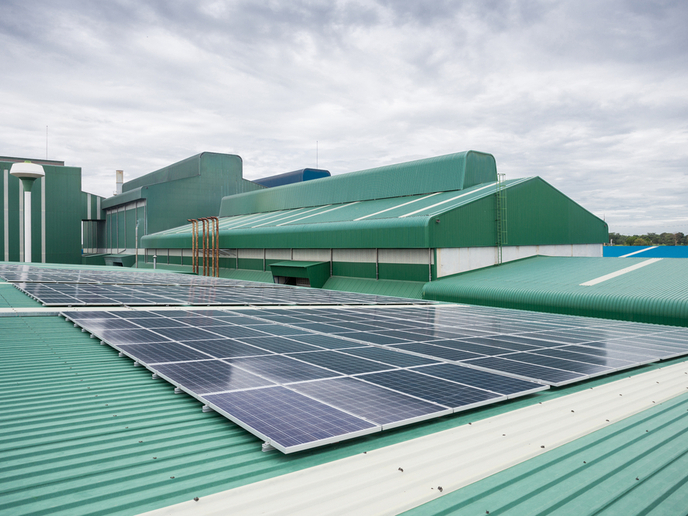Pioneering organic batteries leverage plant-derived lignin
Energy storage is essential to better exploitation of renewable energy sources (RES). Redox flow batteries (RFBs), a relatively new battery option, are a promising alternative to lithium-ion batteries. They are highly modular, safer and scalable, with lower maintenance costs and longer lifetimes and discharge durations. However, a cooling system is often required to maintain the RFBs’ operating temperature, typically to a maximum of about 40 °C for optimal performance. In addition to diminishing energy efficiency, this increases complexity, capital expenditure and operating costs. Furthermore, most RFBs use electrolytes based on vanadium, which is a critical raw material(opens in new window) (CRM). Organic RFBs emerged in 2009 and are one of the most promising approaches to sustaining a grid with an increasing penetration of fluctuating RES. The EU-funded BALIHT(opens in new window) project has developed an organic RFB with a lignin-based electrolyte that boosts operating temperatures and energy efficiency while enhancing safety, recyclability and cost-effectiveness.
Eliminating the cooling requirement of RFBs
Lignin, a biopolymer, is one of the primary structural components of plants and trees. This natural renewable raw material is abundantly available from existing pulp production. “BALIHT’s organic RFB uses a lignin-based electrolyte in aqueous solution, safer and more environmentally friendly than others which can be toxic or flammable. The RFB can operate at temperatures of up to 80 °C with an energy efficiency 20 % higher than current organic RFBs, thanks to several innovations,” explains Marta Pérez Argilés of AIMPLAS(opens in new window). Among the new equipment are plastic frames that double the heat deflection temperature and improve temperature resistance, reducing the expansion to half that of the reference material. They are fully recyclable and cost-effective. In addition, flexible tanks maintain strength under deformation and exhibit excellent chemical resistance; integrated printed sensors showed minimal leakage of electrolytes. Furthermore, innovative coatings that operate at higher temperatures facilitate fluid flow and offer chemical resistance. Finally, “BALIHT’s energy management system with a user-friendly interface optimises resources, costs and flexible assets and is compatible with other types of batteries. It was validated in warm environments with heavy, multicycle use and is adaptable to any battery design and a broad temperature range,” adds Pérez Argilés.
Safe and sustainable by design
Essential components of the BALIHT approach were a safe and sustainable by design strategy and a social life cycle assessment to address the social impacts during the RFB’s life cycle. In addition to its water-based electrolyte solutions, the electrodes and water-soluble binder enable recovery of cathode compounds from spent electrodes using only water. Furthermore, the electrodes can be successfully regenerated with performance comparable to pristine electrodes. The bipolar plates are recyclable through mechanical technologies. “Overall, BALIHT’s components fulfil relevant EU health, safety and environmental regulations and enable 80 % recyclability. They also relieve dependence on CRMs and enhance social performance metrics related to job security, workplace safety and wages. This highlights the many opportunities our organic RFB can exploit in delivering social benefits as well as environmental benefits,” Pérez Argilés emphasises. With further optimisation and validation in a real industrial environment, BALIHT’s high-performance and scalable organic RFB will be on the road to commercialisation where it should have a major impact on the EU’s energy and sustainability goals.







